This article was written by Petty Officer 2nd Class Elisha Smith for The Defense Visual Information Distribution Service and was published on January 18, 2023. It can be viewed here.
The future is here, and it’s virtual. In a world where technology is rapidly evolving, it’s essential that the U.S. Navy evolves with it. One way to keep up with the times is to utilize the latest technology to enhance the Navy’s training methods. Afloat Training Group Pacific’s (ATGPac) mission is to keep the fleet mission-ready and they are navigating the technological field to do just that.
On Wednesday, Jan. 18th, 2023, ATGPac demonstrated a new virtual reality firefighting training system that allows Sailors to fight simulated fires in a safe and cost-efficient way, answering the demand for more contemporary training methods.
“We learned at our training that today’s Sailor prefers to receive training in a much different method than our Sailors of the late 1980s and 1990s,” said Capt. Christopher Follin, commodore of ATGPac. “Today’s Sailors are far more advanced in their skill sets with technology and our current training methods are obsolete. ‘Get Real – Get Better’ identifies that we require advanced methods of training to close the gap between our best and worst. Advanced warfighters require advanced training capabilities.”
The new technology consists of goggles that simulate over 70 environments, including naval ships and shipyards, a vest that can reach temperatures of up to 200 degrees Fahrenheit as Sailors approach the simulated fire, and an attached hose that pulls Sailors backward, emulating the force of water coming out with varying spray patterns.
The Navy’s current training methods involve using color-coded flags for Sailors to determine what class of fire they are fighting; electrical, gasoline, or wood, and what the current status of the fire is; lit or unlit.
Sailors that tried out the system were impressed with the accuracy of the simulation, stating that it felt more realistic than their current training methods.
“There’s still a place for onhand flag training that we have now, but this is more of the future,” said Hull Technician 3rd Class Hunter Dillow. “It’s a lot more immersive, it’s better than just using a flag and your imagination because you have the heat coming off the vest, the smoke, and you can use all of the different situations for different casualties.”
Firefighting is a crucial part of the Navy’s training to keep Sailors prepared for various situations that can happen while out at sea. However, Follin believes this virtual experience can be a valuable alternative to keep muscle memory fresh for Sailors who are unable to attend training at schoolhouses.
While this is not a Navy-wide standard yet, there is a possibility of training like this becoming a more regular part of onboard training.
“We are introducing this type of training as a pilot to see if it applies Fleet-wide,” said Follin. “ATGPac intends to utilize this system at each of the Afloat Training Organizations as a supplemental training tool for Damage Control firefighting teams in the basic phase, damage control industrial training, and upon request by any ship or Federal Fire Department that desires additional training opportunities. This initiative is just one of the measures ATG Pacific will pilot to keep our Sailors proficient while in a maintenance period.”
Afloat Training Group Pacific’s mission is to provide surface ships, including U.S. Coast Guard, with education, training, and assessments to maximize training efficiency and effectiveness and they are doing just that while pushing the Navy forward with the help of the latest technology and training methods.
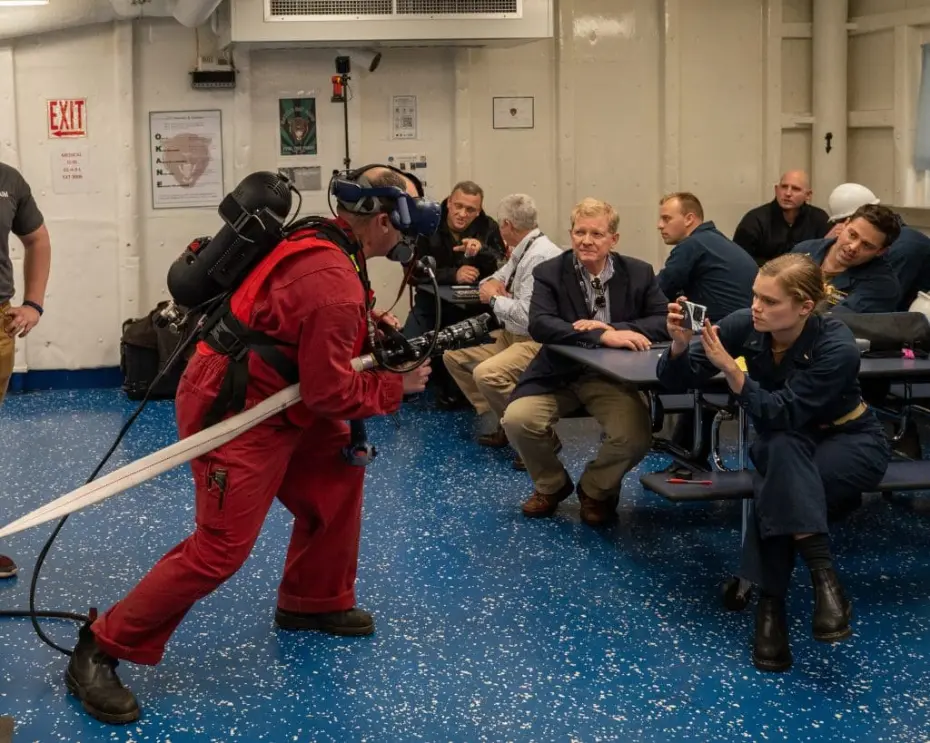
230118-N-MR124-1076 SAN DIEGO (Jan. 18, 2023) A Sailor participates in a virtual-reality firefighting training system demonstration aboard Arleigh Burke-class destroyer USS O’Kane (DDG 77), Jan. 18, 2023. Afloat Training Group Pacific provides surface ships, including U.S. Coast Guard, with education, training, assessments, and certifications to maximize training efficiency and effectiveness. (U.S. Navy photo by Mass Communication Specialist 2nd Class Elisha Smith)
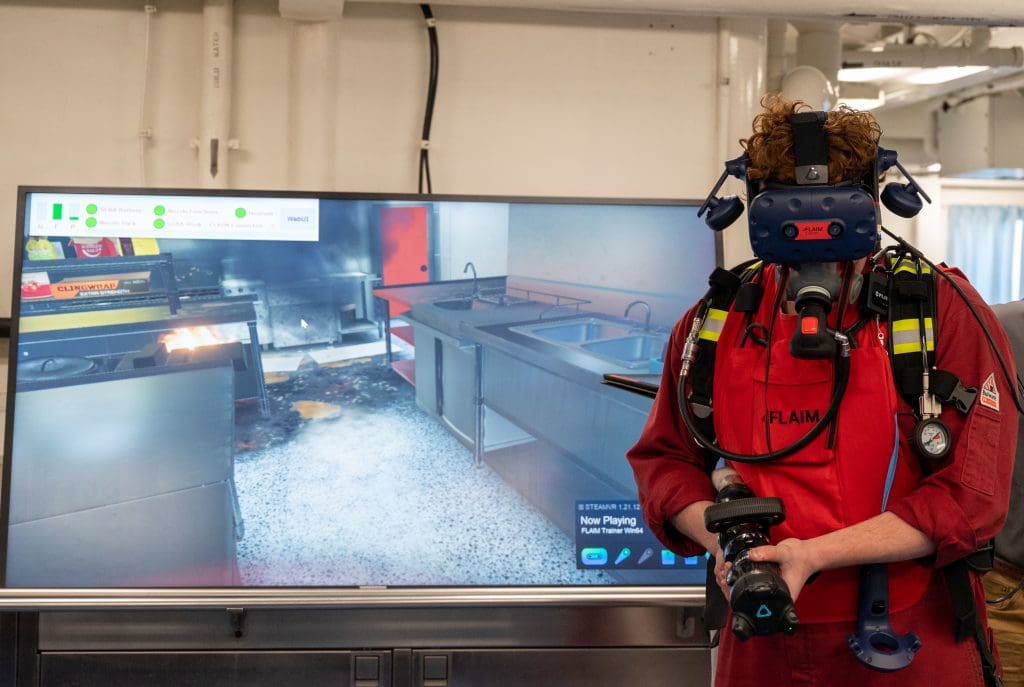
230118-N-MR124-1072 SAN DIEGO (Jan. 18, 2023) Hull Technician 3rd Class Hunter Dillow participates in a virtual-reality firefighting training system demonstration aboard Arleigh Burke-class destroyer USS O’Kane (DDG 77), Jan. 18, 2023. Afloat Training Group Pacific provides surface ships, including U.S. Coast Guard, with education, training, assessments, and certifications to maximize training efficiency and effectiveness. (U.S. Navy photo by Mass Communication Specialist 2nd Class Elisha Smith)
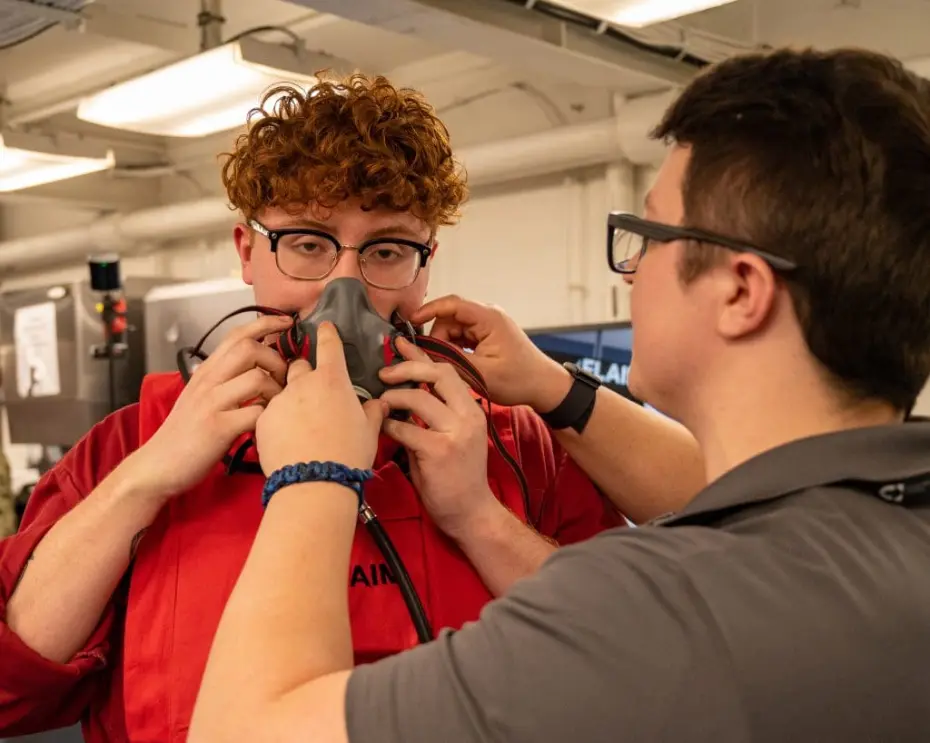
230118-N-MR124-1056 SAN DIEGO (Jan. 18, 2023) Hull Technician 3rd Class Hunter Dillow is fitted with a simulated self-contained breathing apparatus during a virtual-reality firefighting training system demonstration aboard Arleigh Burke-class destroyer USS O’Kane (DDG 77), Jan. 18, 2023. Afloat Training Group Pacific provides surface ships, including U.S. Coast Guard, with education, training, assessments, and certifications to maximize training efficiency and effectiveness. (U.S. Navy photo by Mass Communication Specialist 2nd Class Elisha Smith)
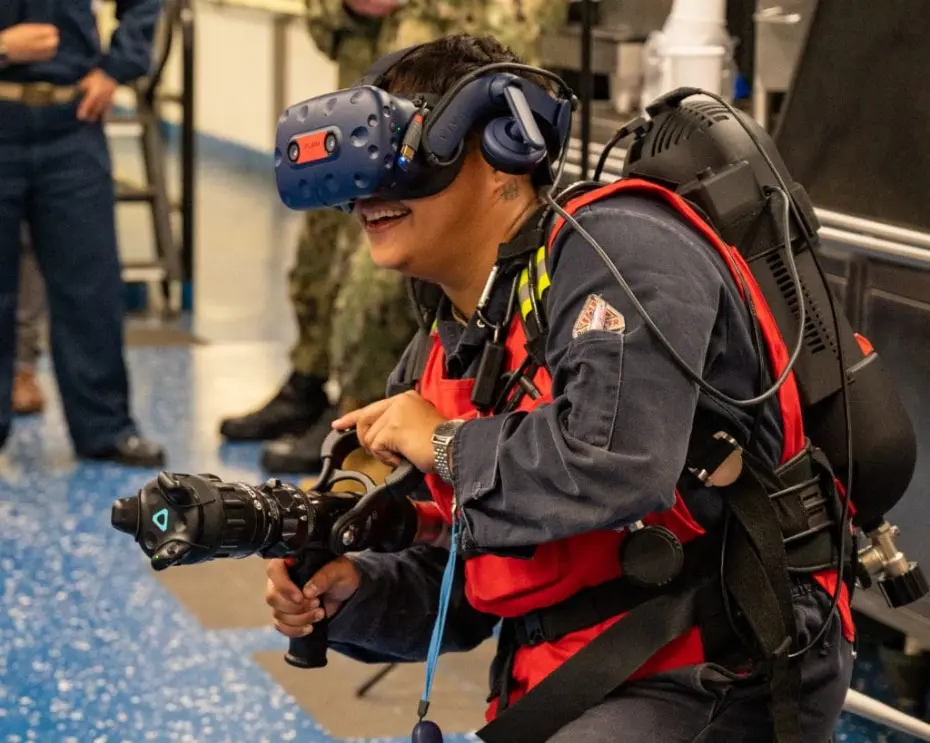
230118-N-MR124-1048 SAN DIEGO (Jan. 18, 2023) Gas Turbine Systems Technician Mechanical 3rd Class Johanna Aquiningoc participates in a demonstration of virtual-reality firefighting training aboard Arleigh Burke-class destroyer USS O’Kane (DDG 77), Jan. 18, 2023. Afloat Training Group Pacific provides surface ships, including U.S. Coast Guard, with education, training, assessments, and certifications to maximize training efficiency and effectiveness. (U.S. Navy photo by Mass Communication Specialist 2nd Class Elisha Smith)
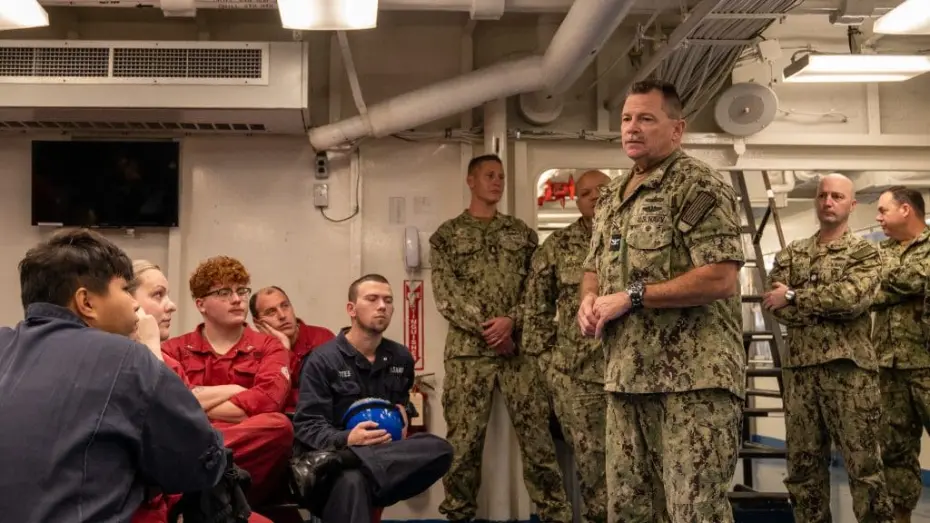
230118-N-MR124-1048 SAN DIEGO (Jan. 18, 2023) Gas Turbine Systems Technician Mechanical 3rd Class Johanna Aquiningoc participates in a demonstration of virtual-reality firefighting training aboard Arleigh Burke-class destroyer USS O’Kane (DDG 77), Jan. 18, 2023. Afloat Training Group Pacific provides surface ships, including U.S. Coast Guard, with education, training, assessments, and certifications to maximize training efficiency and effectiveness. (U.S. Navy photo by Mass Communication Specialist 2nd Class Elisha Smith).